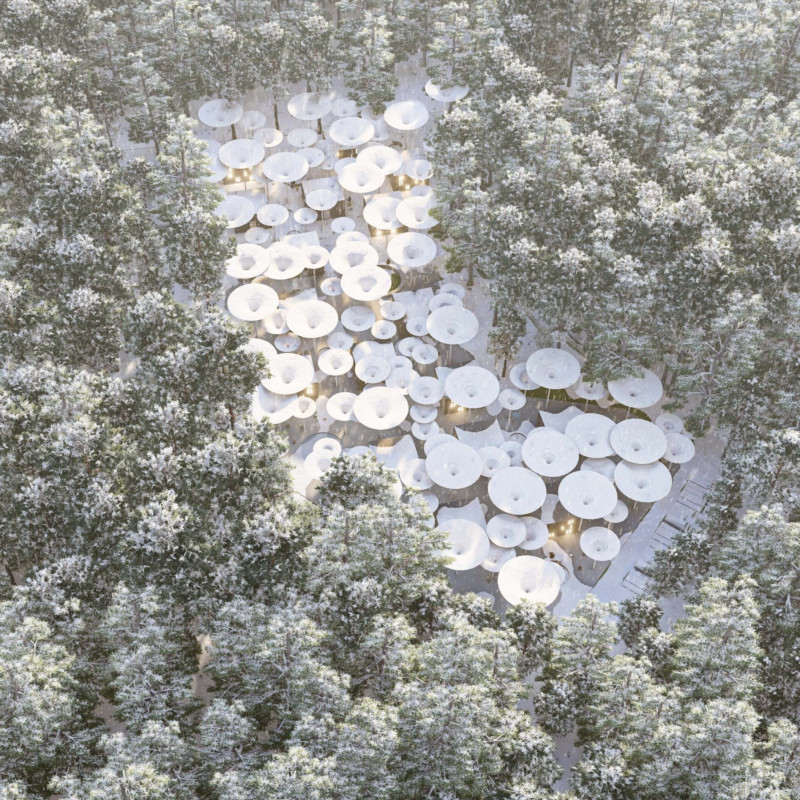5 key facts about this project
The architectural concept emphasizes openness and fluidity, facilitating a seamless flow between indoor and outdoor spaces. It encompasses various functional areas, including communal gathering spots, workspaces, and private zones, catering to a diverse user demographic. The layout optimizes natural light, enhancing the overall atmosphere and creating a welcoming ambiance.
Unique Design Approaches
This project distinguishes itself through its emphasis on sustainability and eco-friendliness. The design incorporates green roofs and walls, promoting biodiversity and improving energy efficiency. Additionally, the use of reclaimed materials reflects a commitment to environmental responsibility without compromising on modern aesthetics. Large, operable windows enhance ventilation, reducing reliance on mechanical cooling systems.
Furthermore, the architectural language employs a minimalist approach, characterized by clean lines and a restrained color palette that allows the building to integrate into its surroundings rather than dominate it. This thoughtful design not only addresses aesthetic concerns but also focuses on user comfort and energy conservation.
Materiality and Construction
The materials utilized in the project are deliberately chosen to reflect both durability and sustainability. Key materials include:
1. Reclaimed Wood: Used for cladding and interior finishes, offering warmth and a natural feel.
2. Steel: Employed structurally for support and aesthetic detailing, contributing to the modern look of the building.
3. Glass: Large panels are used for façades and windows, promoting natural light and connectivity between spaces.
4. Concrete: Utilized for structural components, providing stability and longevity.
These materials come together to form a cohesive design that not only meets functional requirements but also encourages a sustainable lifestyle and environmental stewardship.
Exploring the architectural plans, sections, and specific design choices will provide a more in-depth understanding of the project’s nuances. Interested readers are encouraged to delve into the architectural designs and ideas to appreciate the intricate details and innovative approaches that characterize this project.


























